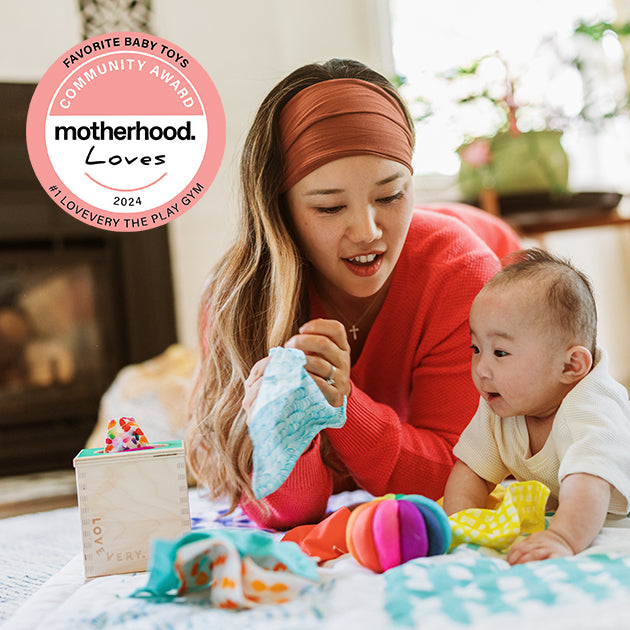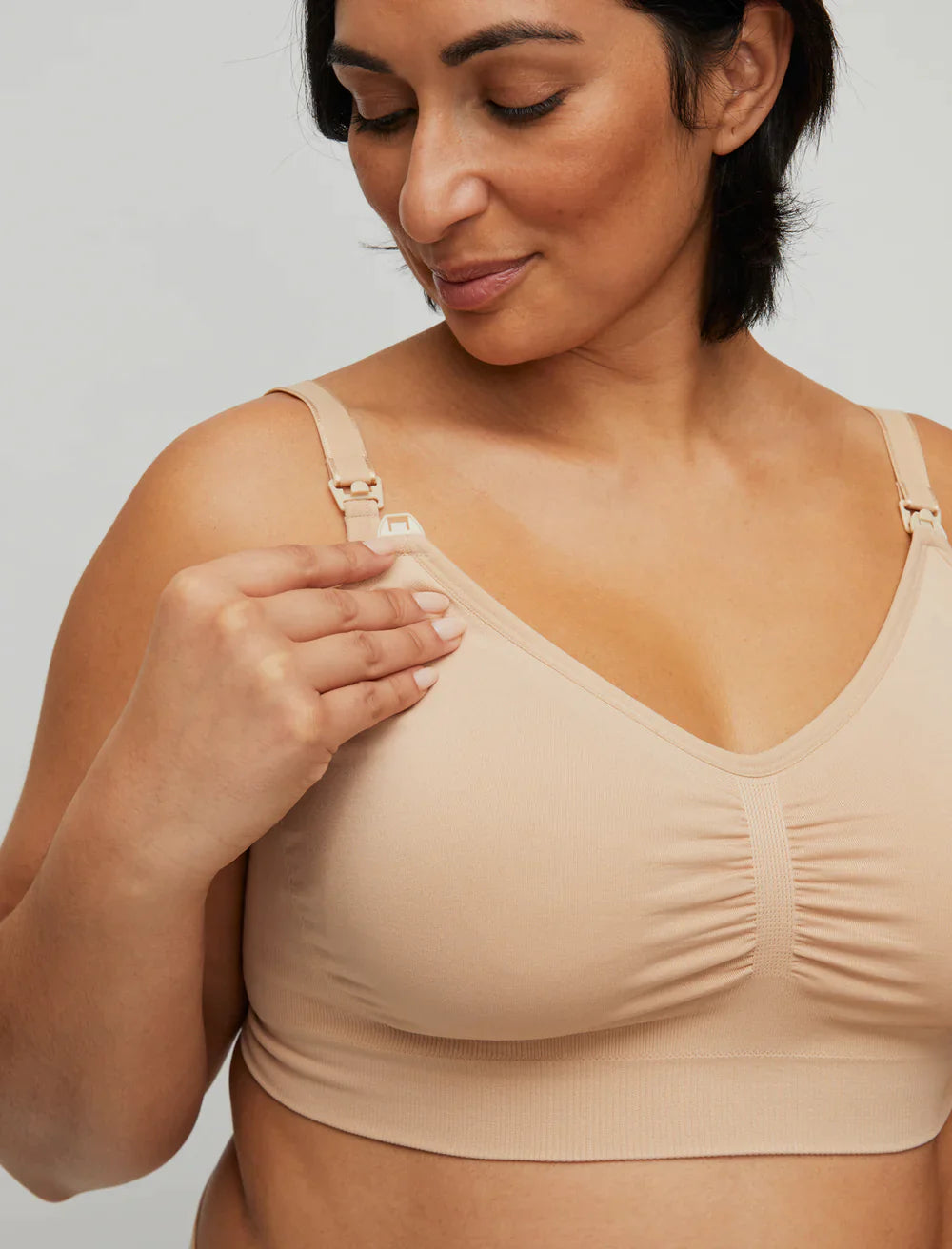With a positive pregnancy test in hand and a little one on the way, your body is gearing up for some pretty significant changes. While most of us are familiar with the obvious ones (hello, baby bump!), you might be surprised to learn that your breasts also go through a lot during these nine months.
But don't worry — we're here to guide you through these changes, from early signs of pregnancy to the arrival of your bundle of joy.
Are Breast Changes Early Signs of Pregnancy?
It's not just the missed period or that positive pregnancy test that tells you you're expecting. One of the first early pregnancy symptoms you might notice is changes in your breasts. They may feel tender, fuller, or a bit sore.
Why so soon? You can thank pregnancy hormones like progesterone and estrogen! These hormones kick into high gear right from the start, preparing your body to support a growing baby. So yes, your breasts get the memo about your new guest quite early on!
Breast Changes in the First Trimester
As you move into your first trimester, you might notice your breasts continuing to change. That's your body's way of saying, "It's game time!" Hormonal changes, particularly increased levels of progesterone and estrogen, stimulate the development of the milk duct system, leading to breast enlargement.
And that's not all. You might also spot changes to your areolae. They may become larger and darker as your body prepares for future breastfeeding. And have you noticed those tiny bumps on the areola becoming more prominent? Those are Montgomery’s tubercles, and they help lubricate the skin around the nipple, preventing it from becoming dry during breastfeeding.
Even though breastfeeding may seem a long way off, your body is always one step ahead, getting ready for the days to come.
Transitioning Into the Second Trimester
Just when you've grown accustomed to your first-trimester changes, the second trimester sweeps in with more transformations. As your pregnancy progresses, your breasts continue to prepare for breastfeeding.
You might see a significant increase in your breast size. This is due to increased blood flow and blood volume in the breasts. The milk ducts are growing and expanding in preparation for lactation.
It's also around this time that many women experience increased breast discomfort and pain. But don't worry — it's a normal part of the process, and it's also a sign that your body is prepping to nourish your baby once they're born.
Preparing for Lactation: Third Trimester Changes
The third trimester is when things really start to get interesting. This is the period when your body gears up for the main event: breastfeeding.
During this trimester, your breasts may start to produce colostrum, the first breast milk your baby will receive after birth. This early milk production can lead to occasional leakage. If you notice this, consider using breast pads to stay comfortable and dry.
What’s the Deal With Stretch Marks and Skin Stretches?
As your breasts grow during pregnancy, your skin stretches to accommodate this change, which can sometimes lead to stretch marks. These are thin, streak-like lines that appear on the surface of the skin. While they might be a bit startling at first, rest assured they're a common part of pregnancy, and they often fade after childbirth.
What Is the Importance of a Supportive Bra?
As your breasts change and grow, a supportive bra becomes a maternity must-have. And this is where our Plus Size Seamless Clip Down Maternity and Nursing Bra comes into play. This award-winning bra featured in Harper's Bazaar, The Bump, and What to Expect has over 500 five-star reviews!
Whether you're in your first trimester or third, the bra provides support and stretch to adapt to your changing size — and once the baby arrives, the clip-down straps make nursing a breeze. Best of all, it's a wireless bra designed to offer comfort from day to night.
Pro Tip: We always suggest having at least a couple of these bras on hand to wear, wash, sleep, and keep for those unexpected moments.
Navigating the Post-Pregnancy Phase
Once your little one has arrived and breastfeeding begins, you might think the changes to your breasts have finally come to an end. But hold on, mama — there's still a bit more to expect.
Engorgement, or the swelling of breasts due to increased milk production, can occur in the first few days after birth. This can be somewhat uncomfortable, but it usually resolves within a week. To help manage this, a well-fitting, supportive bra, like our Seamless Maternity and Nursing Bra, is essential.
Importance of the Right Fit: Sizing Your Maternity Bra
As your breasts change throughout pregnancy and post-delivery, finding the right bra size is crucial. Look for a maternity bra that offers flexibility in cup size, as your breasts can fluctuate in size during this time. Consider bras with adjustable shoulder straps and multiple hook settings to accommodate your changing shape.
A well-fitting bra not only helps with breast tenderness and discomfort but also supports your changing posture and can help prevent unnecessary stretch marks.
What About Sleep Bras?
Even while sleeping, your breasts may need a little extra support. This is why many women turn to sleep bras. These bras are typically wireless and made from soft, breathable fabrics. They offer gentle support while sleeping or lounging, and for those mamas experiencing night-time leakage, they can hold breast pads in place.
How To Care for Sore Breasts
Experiencing breast pain or tenderness during pregnancy is common. Warm or cold compresses can offer relief, and wearing a supportive bra can help alleviate discomfort.
Some women also find relief from massages, but always be gentle to avoid further discomfort. If the pain persists or increases, it's best to seek advice from a healthcare professional.
Conclusion: Your Breasts and Pregnancy
As you journey through pregnancy and into motherhood, your breasts will undergo significant changes. Whether it's the enlargement in the early weeks of pregnancy, the appearance of stretch marks, or preparing for milk production, each change plays a crucial part in preparing your body to nurture your baby.
Remember, every woman's experience is unique, and these changes may vary from person to person. With the right supportive bra from Motherhood, some self-care, and regular check-ups, you can navigate these changes confidently and comfortably. Welcome to the incredible journey of motherhood, mama!
Sources:
Breast Changes During Pregnancy | American Pregnancy
Hormones During Pregnancy | Johns Hopkins Medicine
What causes stretch marks during pregnancy? | ACOG
Breast Pain: 10 Reasons Your Breasts May Hurt | Johns Hopkins Medicine





